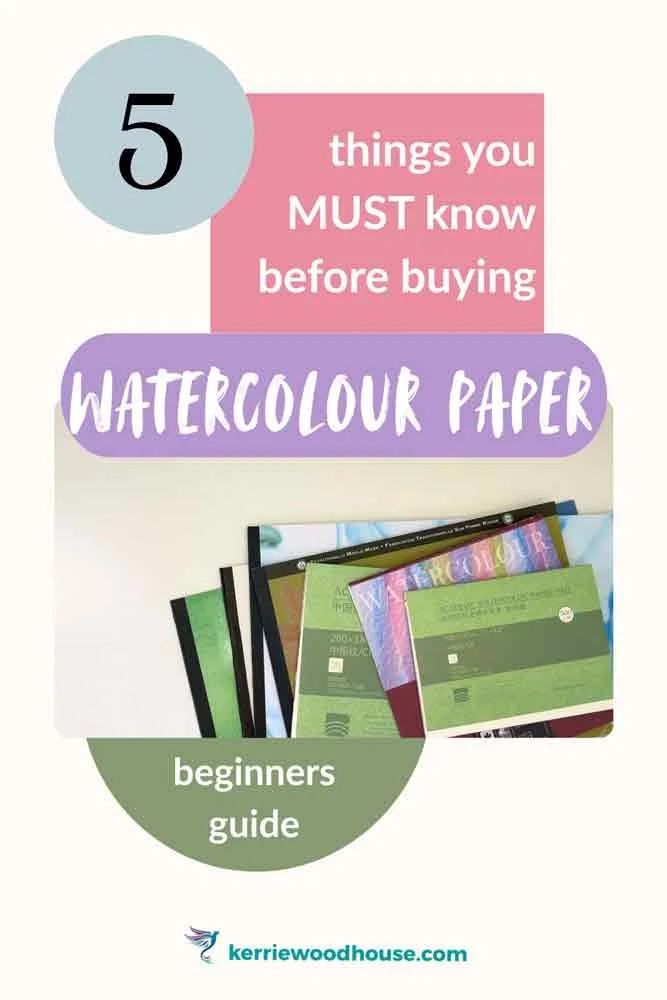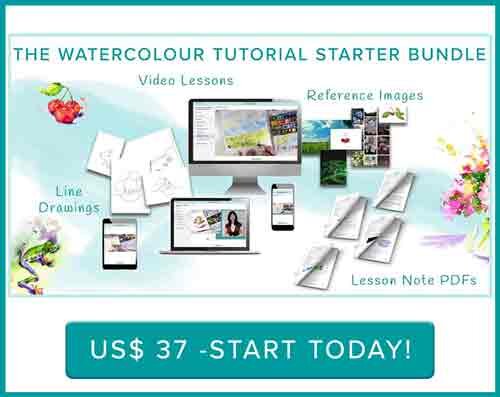5 Things You MUST Know Before Buying Watercolour Paper (Beginner's Guide)
Disclosure: This post may contain affiliate links. That means if you buy something we may possibly get a small commission at no extra cost to you.
When you're starting your watercolour journey, it's tempting to save money on expensive supplies. And for most materials, that's actually good advice.
But when it comes to paper? That might actually sabotage your progress.
If you've been following watercolour tutorials and wondering why your results look nothing like the instructor's beautiful effects, it could just be the paper. I've seen too many beginners get frustrated and give up, not realizing their cheap paper was working against them the whole time.
Here are the five crucial things you need to know about watercolour paper to set yourself up for success from day one.
1. Paper Deserves the Lion's Share of Your Art Budget
There is a daunting array of delightful supplies available - its easy to end up way over budget! So lets make sure that we spend wisely - prioritising the key supply.
Paper is the most important watercolour supply in my opinion, and it deserves the biggest chunk of your art supplies budget. Think about it - it's water that puts the magic in watercolour, so you need paper that can actually cope with that.
The techniques you'll use in watercolour - lifting, blotting, layering, wet-into-wet - all rely on paper with excellent absorbency and durability. When it comes to paints and brushes, you can absolutely get away with student-grade supplies. There are children's watercolours that are vibrant and wonderful to work with, and you won't feel much difference compared to expensive artist versions.
But paper? The student versions just don't cut it.
Even with brushes, I haven't found huge differences between expensive and mid-range options. Sure, there are cheap and nasty versions of all supplies, but it's much easier to find decent budget paints and brushes than decent budget paper.
My advice: Invest in good paper first, then upgrade your other supplies as you progress.
2. Weight Matters More Than You Think
Since watercolour paper needs to absorb loads of water, you need thicker, heavier paper. Paper weight is measured in either pounds (lb) or grams per square meter (gsm), and you'll usually see both on the packaging.
Here's what you need to know about the common weights:
300gsm (140lb) - The Sweet Spot This is my go-to recommendation for almost everyone. For comparison, regular printer paper is 80gsm, so this feels lovely and thick. Yes, it's more expensive because there's literally more material in each sheet, but it's worth every penny.
200gsm - Absolute Minimum This is about as light as I'd recommend going. You might get away with very light washes, but anything more substantial will cause problems.
140gsm - Too Light I find this just makes your life harder than it needs to be. The paper will buckle and warp, fighting you every step of the way.
600gsm+ - Overkill (and Wallet-Killer) This stuff is almost like cardboard. Sure, it's strong, but it's prohibitively expensive and actually harder to work with. It's difficult to tear or cut, and the cost will make you so nervous you'll probably paint worse anyway.
Stick with 300gsm. It's the perfect balance of durability, workability, and cost.
3. Surface Texture is Your Secret Weapon
The surface of watercolour paper (sometimes called "tooth") completely changes how your paint behaves. Understanding this will transform your painting experience.
Hot Pressed - The Smooth Operator Think of a hot iron smoothing out wrinkles - that's literally how this paper is made. It's incredibly smooth, perfect for:
Detailed work
Mixed media (adding pen or pencil lines)
Illustrations requiring fine details
I don't use hot pressed much, but it's fantastic if you love precise, detailed work.
Cold Pressed - The Goldilocks Choice This is "not hot pressed" (you'll sometimes see "NOT" on the label). It has just enough texture to be forgiving for new painters, with little indentations where water and pigment can pool and create beautiful effects.
Cold pressed is perfect because:
It's forgiving for beginners
Creates natural texture and interest
Embraces watercolour's loose, expressive nature
Still smooth enough for moderate detail
Rough - The Texture Lover's Dream Maximum texture for maximum loose effects. The paint pools in all those little valleys, creating gorgeous granulation and organic textures. If you love loose, expressive painting, rough paper becomes your best friend.
My recommendation: Start with cold pressed. It's the most versatile and user-friendly option.
4. Format: Pads vs Blocks vs Sheets
You'll see watercolour paper sold in various formats, and each has pros and cons.
Pads Bound on one edge like a notepad. Easy to tear out individual sheets, available in loads of sizes. This is probably what most people think of when they imagine watercolour paper.
Blocks This is my current favorite format. Blocks look like pads but are gummed on all four sides with a small notch for removal. You paint on the top sheet while it's still attached, then slice it off with a palette knife once it's completely dry.
Why I love blocks:
The paper stays perfectly flat while painting
No need for stretching or taping
Built-in "stretching" that prevents warping
Clean, flat results every time
Loose Sheets You can buy large sheets (usually 56cm x 76cm) and cut them to size. Some people swear this is more economical, and you can even buy paper in rolls like wallpaper if you're really committed.
Honestly? I found cutting sheets way too much hassle. You've got to figure out torn vs cut edges, deal with storage, manage offcuts... Life's too short.
My recommendation: Start with blocks for the convenience, or pads if you want size flexibility.
5. Give Yourself Permission to Use the Good Paper
This might be the most important point of all: stop saving the good paper for "proper" paintings.
I get it.
Quality watercolour paper is expensive, and it's heartbreaking when you make a painting you don't love. But here's the thing - using inferior paper while you're learning is like trying to become a baker with an Easy Bake Oven.
You need to learn how your paints and brushes behave on the paper you'll actually use for "good" paintings. Fighting with supplies that aren't designed for the job will suck all the fun out of the process.
Remember:
"Good" is subjective
Every "failed" painting is valuable practice
You probably need relaxation and fun more than perfect paintings
Using proper tools is part of the learning process
The most important thing is that you enjoy painting. And you can't enjoy it if you're constantly battling your paper.
Your Next Steps
Now you're armed with the knowledge to choose paper that will support your watercolour journey instead of sabotaging it. Here's my specific recommendation for beginners:
Buy: 300gsm cold pressed paper in block format
This combination gives you:
Durability to handle water and techniques
Forgiving texture that enhances your painting
Convenience and built-in paper management
Professional results that will encourage you to keep painting
Don't forget - you can save money on brushes and paints when starting out, but invest in your paper. It's the foundation everything else builds on.
Want the complete deep-dive into watercolour paper types? Check out my comprehensive guide to choosing watercolour paper for everything you need to know about texture, weight, format, and quality grades.
Wondering if you have to stretch watercolour paper? Find out all about that in this detailed post.
Ready to start painting? Grab some good paper and dive in - your watercolour journey is waiting!
Do you have more questions about watercolour supplies? I have a whole class all about watercolour supplies for beginners. Its totally FREE and it comes with a downloadable guide.
Get yours below! 👇
Are you on your own painting journey?
One of these might be useful…









